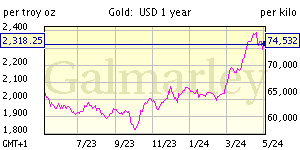
Delegates attend the Bretton Woods conference in July of 1944 at the Mt. Washington Hotel in Bretton Woods, New Hampshire, US
Tahukah anda bahawa wang-wang kertas dalam edaran di seluruh dunia hari ini sudah tiada apa-apa sandaran kepada emas dan perak sejak tahun 1971 lagi? Sejarah merekodkan bahawa peristiwa "pecah amanah" yang telah dilakukan oleh Kerajaan Amerika Syarikat pada Perjanjian Brettonwoods 1945 terhadap 44 buah negara yang menandatangani perjanjian tersebut.
Memang pada mulanya Amerika Syarikat menjanjikan dan menjamin bahawa setiap Dollar Amerika ada disandarkan emas (USD35/oz emas). Tetapi ini hanyalah tipu-daya mereka memerangkapkan ummah menerima Dollar Amerika sebagai "matawang reseb" (Reserve Currency) menggantikan emas yang disimpan di 44 buah negara tersebut!
Pada masa tersebut dikatakan "Dolar Amerika adalah sama seperti simpanan emas" (Dollar Amerika as good as gold). Setelah semua ahli menerima dan memberikan bai`ah kepada Amerika Syarikat, negara ini mula mencetak lebih banyak Dollar daripada sandaran emas yang ada! Penipuan ini terbongkar sehingga ada pemimpin-pemimpin negara yang sedar, lantas segera meminta emas yang dijamin.
Graf Global Kenaikan Paras Emas
Sejarah mencatatkan pada masa pemerintahan Presiden Richard Nixon iaitu tahun 1971, Amerika Syarikat mengisytiharkan bahawa semua matawang kertas sudah tidak perlu bersandarkan emas lagi. Semua wang kertas adalah dibebaskan terapung di pasaran matawang semata-mata menjadikan nilainya sesama sendiri tiada harga sedikit pun! Inilah penipuan yang paling hebat dalam sejarah kemanusiaan!
Key role for the U.S. Dollar
– U.S. dollar pegged to gold, and other currencies pegged to the
dollar. Formed a “gold-exchange” standard with the dollar serving
as the reserve currency
– Status of the dollar made the system dependent on US
macroeconomic policy--system stability required price stability (low
inflation) in the US
– U.S. dollar pegged to gold, and other currencies pegged to the
dollar. Formed a “gold-exchange” standard with the dollar serving
as the reserve currency
– Status of the dollar made the system dependent on US
macroeconomic policy--system stability required price stability (low
inflation) in the US
• U.S. as a stabilizing force, 1945-58
– U.S. trade surpluses lead to a “dollar shortage” in the rest of world – Solved by U.S. foreign aid programs (Marshall Plan), and overseas military expenditures (Korean War). These transfers allowed other nations to finance their BOP deficits (Figure 4) – The IMF’s resources were insufficient. Foreign aid helped smooth payments problems in the early Bretton Woods era
Reality of the Bretton Woods System
Rujukan: Kelantan Golden Trade Sdn. Bhd.– U.S. trade surpluses lead to a “dollar shortage” in the rest of world – Solved by U.S. foreign aid programs (Marshall Plan), and overseas military expenditures (Korean War). These transfers allowed other nations to finance their BOP deficits (Figure 4) – The IMF’s resources were insufficient. Foreign aid helped smooth payments problems in the early Bretton Woods era
Reality of the Bretton Woods System
• Adjustable pegs was almost never adjusted
• IMF monitoring was ineffectual (when nations adjusted exchange rates, they did not follow the rules)
• Inflation was a persistent problem, beginning in the 1960s (with the US was the biggest offender)
• Bretton Woods collapsed abruptly in 1971 – Nixon breaks the link between dollar and gold
• IMF monitoring was ineffectual (when nations adjusted exchange rates, they did not follow the rules)
• Inflation was a persistent problem, beginning in the 1960s (with the US was the biggest offender)
• Bretton Woods collapsed abruptly in 1971 – Nixon breaks the link between dollar and gold




No comments:
Post a Comment